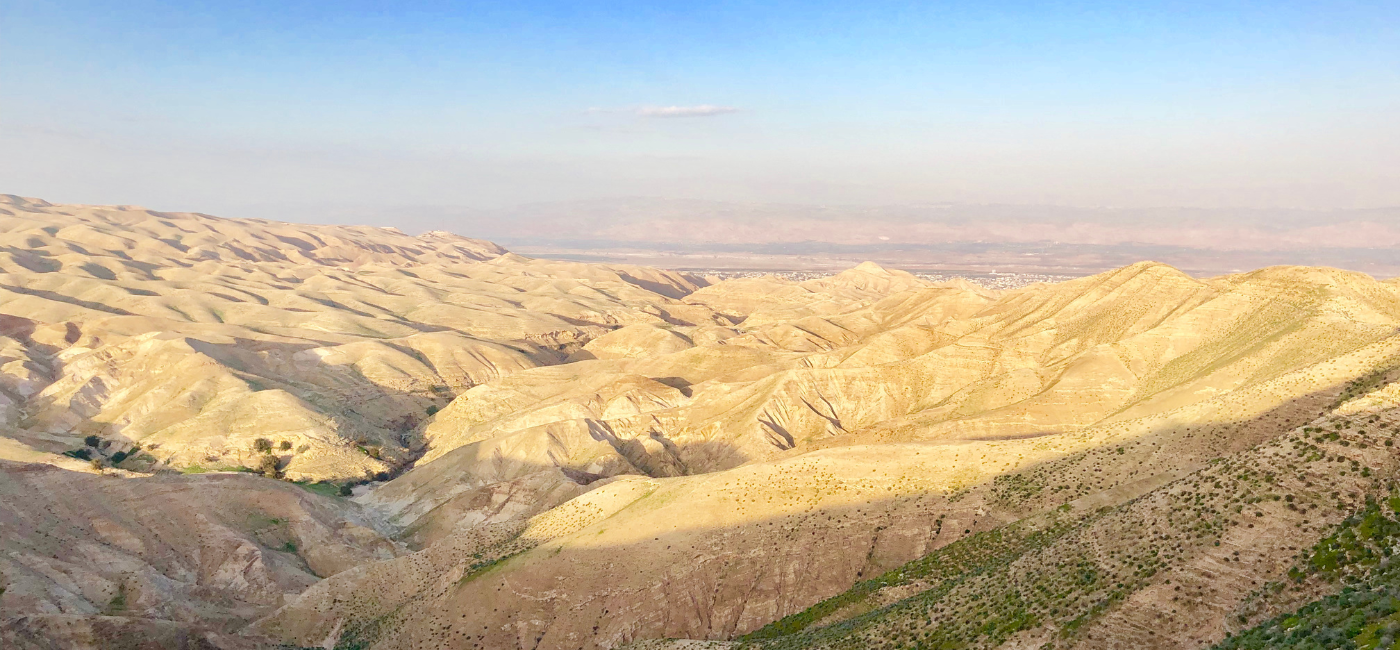
Who Is My Neighbor?
November 6, 2023
A cherished spot to CHLS travelers is the Wadi Qilt. It is a magnificent location where one can overlook the Jericho Road as it weaves its way from Jericho at the deep end of the Wadi all the way up to Jerusalem. This route was often chosen by pilgrims and travelers to avoid Samaritan territory, given the historical tension between Jews and Samaritans. The pilgrims on their way to Jerusalem during various annual festivals. Due to the traffic, this path was a prime target for robbers. Jesus knew this route well and used it as the backdrop for his parable of the Good Samaritan found in Luke (10:25-37).
Luke 10:25 opened with a lawyer posing a question, and Jesus responded with another question, which was a common practice in Judaism. "What is written in the law? How do you read it?" The lawyer's answer aligned with what the Scriptures required: "You shall love the Lord your God with all your heart, soul, strength, and mind, and love your neighbor as yourself." However, the lawyer did not stop there. He sought justification and wanted to be commended for having done "enough." He asked, "Who is my neighbor?"
As we dig into the parable, let me begin by sharing with you an important term called, “Midrashim.” Midrashim are known as Jewish interpretations of Scripture that discuss biblical topics. A common pattern used in this type of storytelling involves the use of three characters. These characters generally took on the persona of a priest (Cohen), followed by a Levite (Levi), and ended with an "Israelite" or a regular Jew. These Midrashim were well-known to Jesus and those from the first century.
With the Jericho Road as a backdrop and the use of a common storytelling technique, Jesus taught the parable in Luke 10:30-37. A man on the Jericho Road, traveling from Jerusalem to Jericho, was robbed and left "half dead." "Half dead" in Hebrew was “a gosses.” This essentially referred to a terminally ill patient who was not expected to live longer than three days. According to Jewish law, “a gosses” is still considered a person deserving of help.
Who do we find crossing this terminally ill individual first? A priest and a Levite were both headed down to Jericho. At that time, Jericho was a place of relaxation and vacation for the wealthy Jerusalem priesthood. Going down allowed them to leave behind their responsibilities, including ritual purity, as they would likely spend a month in Jericho and purify themselves before returning to Jerusalem. In this parable, it appears they prioritized their fear of ritual impurity over the fundamental commandment to love their fellow man. Helping or touching the injured man, the "gosses," and his blood might render them unclean if he later died, depending on the time they helped. Some even believed that their shadow touching the man would defile them. The truth was that they placed their personal interests above showing the love of God to a man in dire need.
It was then that Jesus provided a shocking twist to the story. He replaced the Israelite with a Samaritan! This baffled his listeners! The audience was blindsided by the audacity of a Samaritan being presented in a good light! The Samaritan saw the man and immediately helped by showing compassion, providing care, and spending his own money to aid someone who was not considered his neighbor.
We must realize that Jesus deliberately chose a Samaritan. Samaritans were people who knew the law and the commandments and possessed knowledge of the Torah. Jesus could not have used a Roman, Greek, Syrian, Egyptian, Edomite, Arab, or anyone else, as they did not know the Torah. Then, Jesus asked, "Which of these three proved to be a neighbor to the man who fell among the robbers?" The lawyer replies, "The one who showed him mercy." Jesus replied, “Go and do likewise.”
In mainstream Judaism, a century after Jesus, a ruling emerged that still applies in Jewish law today called 'Pikuah Nefesh.' This means that the preservation of human life takes precedence over virtually any other religious rule in Judaism. Nearly all Torah commandments can be set aside for the sake of saving a soul.
Jesus was remarkably ahead of his time in understanding fully God's intent in "love thy neighbor." Jesus used the parable to teach us that our neighbor is the one in need; the one requiring mercy, the one also created in the Image of God. In doing so, Jesus placed the needs of the person above the duties of the priest and the Levite and even above the Law. Humanity is profoundly valuable to God. As we interact with people in our lives, we must value them as God values them. When we do, we reveal the authenticity of God’s love to our neighbors.
Posted In Devotional Israel


